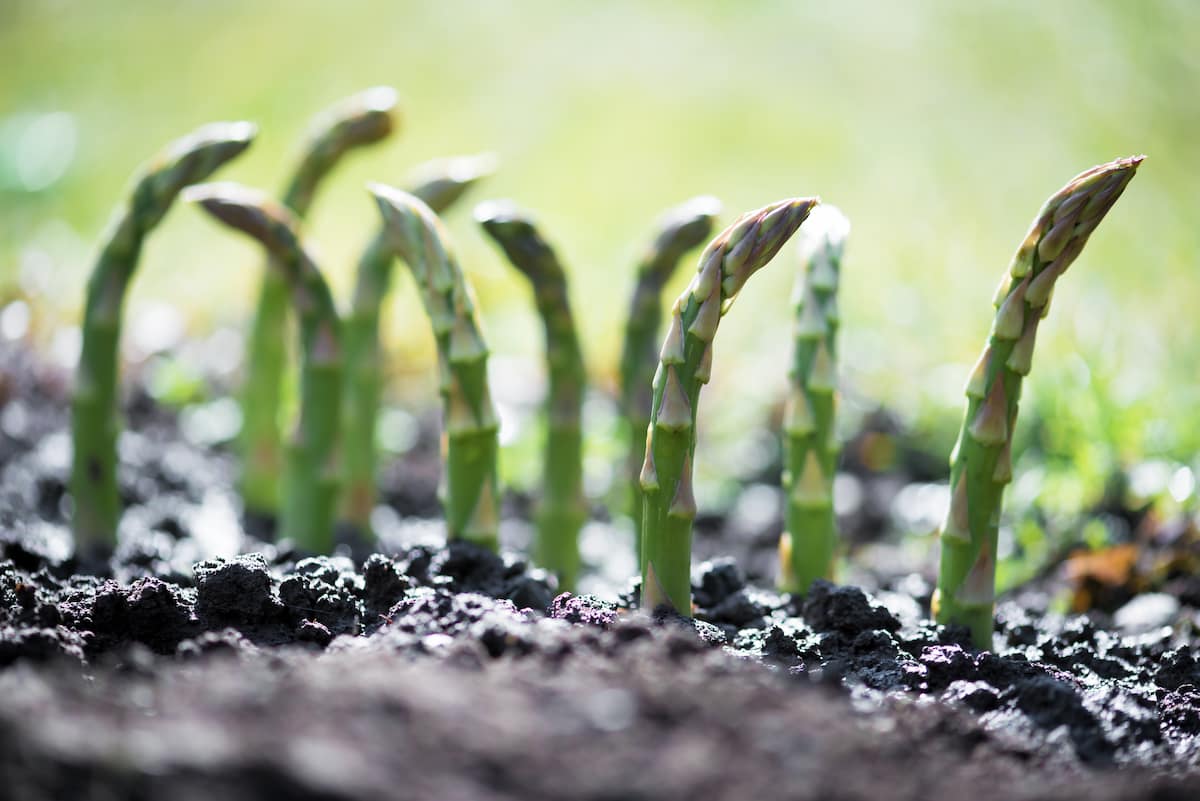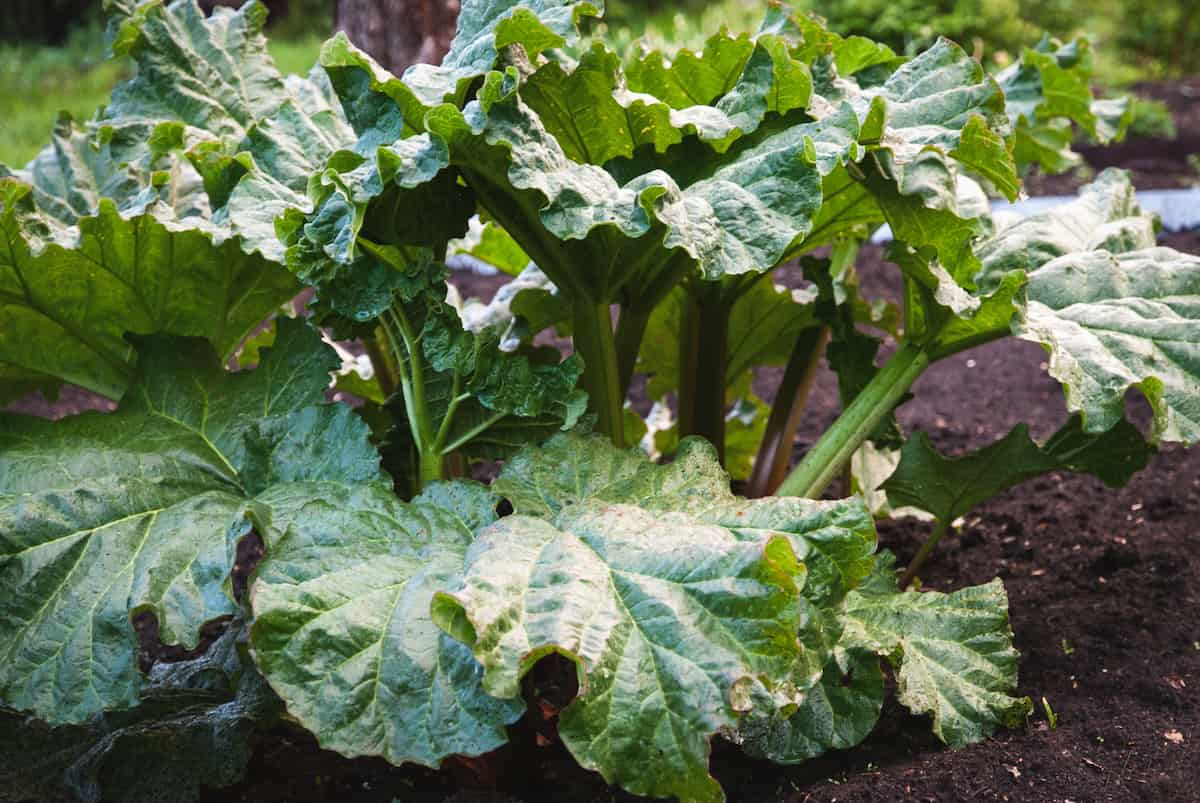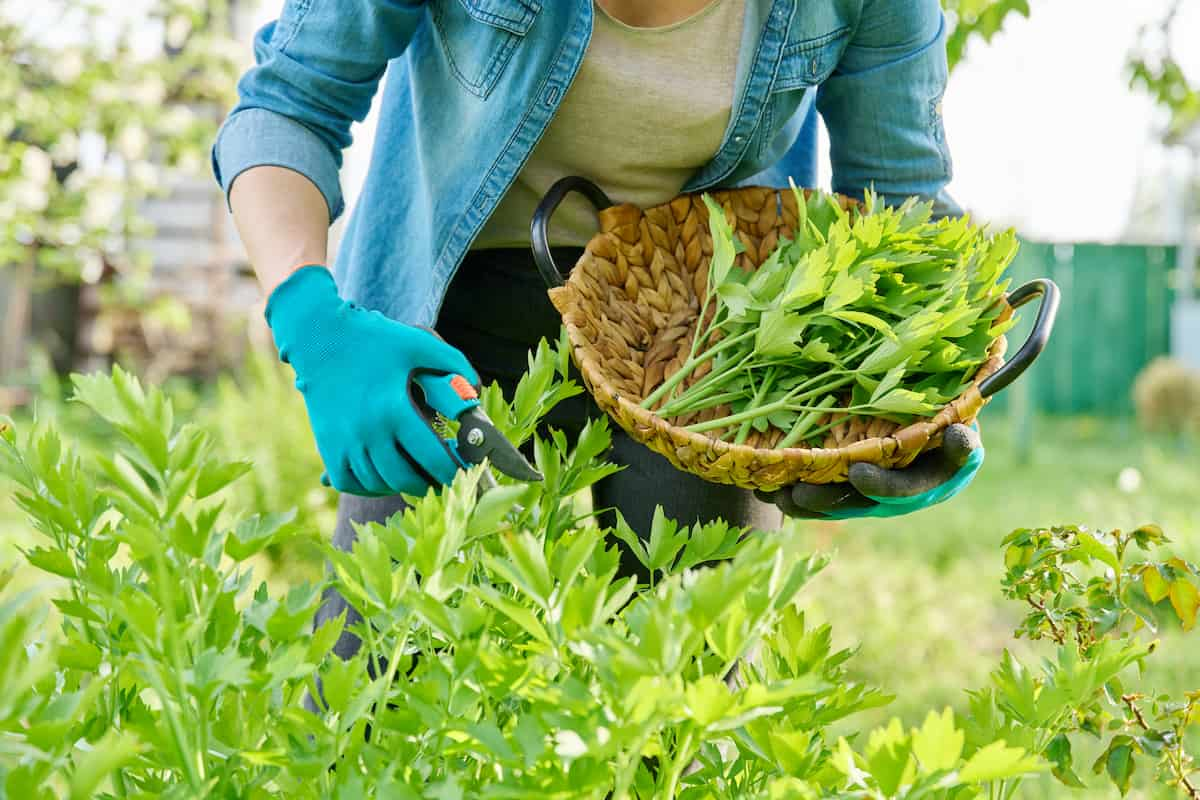Perennial vegetables are a gardener’s best friend. Unlike annual vegetables, which require replanting yearly, perennial vegetables grow back year after year with minimal effort. Below we learn the top 12 perennial vegetables you can plant once and enjoy forever.
Top 13 Perennial Vegetables
Asparagus
Asparagus is a popular perennial vegetable that is both delicious and nutritious. It takes two to three years to establish, but once mature, you can harvest tender spears every spring for up to 20 years. Asparagus is a sun-loving plant that prefers well-draining soil. Plant asparagus crowns in early spring, approximately 18 inches apart and 8 inches deep. Mulch generously to suppress weeds, conserve moisture, and be patient: you’ll be rewarded with a bountiful harvest for years to come.
In case you missed it: Top 12 DIY Lawn and Garden Edging Ideas for Beginners

Jerusalem Artichoke
Also known as sunchoke or earth apple, Jerusalem artichoke is a sunflower relative that produces edible tubers. These tubers have a nutty, sweet flavor and can be eaten raw, roasted, or mashed. Plant Jerusalem artichoke tubers about 3-4 feet apart in early spring in well-draining soil with full sun exposure. The plants can grow up to 10 feet tall and may need staking. Harvest the tubers in late fall or early winter after the first frost. Replant any smaller tubers to ensure a continuous harvest.
Malabar Spinach
Malabar spinach is a perennial vine that produces succulent, spinach-like leaves. It thrives in warm climates and is often grown annually in cooler regions. Plant Malabar spinach seeds or cuttings in well-draining, fertile soil with full sun. Space the plants about 1-2 feet apart and provide a trellis or support for climbing the vines. Harvest the leaves as needed throughout the growing season.
Chinese Artichoke
Chinese artichoke is a perennial tuber that produces small, knobby tubers with a mild, nutty flavor. The tubers can be eaten raw, boiled, or sautéed. Plant Chinese artichoke tubers in early spring in well-draining, fertile soil with full sun to partial shade. Space the tubers about 12-18 inches apart. Harvest the tubers in late fall or early winter after the first frost.
Sorrel
Sorrel is a perennial leafy green with a tangy, lemony flavor, often used in soups, salads, and sauces. It’s easy to grow and tolerates various soil types, though it prefers well-draining, fertile soil. Plant sorrel seeds or divisions in spring or fall, spacing them about 12-18 inches apart. Harvest the leaves as needed, not removing more than one-third of the plant at a time. Sorrel is hardy and can provide fresh greens for many years.
Rhubarb
Rhubarb is a hardy perennial vegetable with a tart flavor, perfect for pies, jams, and sauces. Growing and thriving in cool climates with well-draining, fertile soil is easy. Plant rhubarb crowns in early spring or fall, spacing them about 3-4 feet apart. Rhubarb plants can grow quite large, so give them plenty of room. Once established, harvest the stalks (not the toxic leaves) in spring and early summer for up to 20 years.
In case you missed it: Top 10 Secrets of Companion Planting and the Most Popular Combinations

Sea Kale
Sea kale is a perennial vegetable native to the coasts of Europe. It’s prized for its tender, succulent leaves and shoots with a mild, cabbage-like flavor. Sea kale prefers well-draining, fertile soil and full sun to partial shade. Plant seeds or root cuttings in early spring, spacing them about 2-3 feet apart. Harvest the young leaves and shoots in spring and early summer, blanching them first to reduce bitterness.
Perennial Broccoli
Perennial broccoli, also known as nine-star broccoli or perennial cauliflower, is a hardy vegetable that produces small, tender heads year after year. Plant seeds or divisions in early spring or fall in well-draining, fertile soil with full sun. Space the plants about 2-3 feet apart. Harvest the heads in spring, cutting them above a leaf node to encourage new growth and more harvests.
Ostrich Fern
Ostrich fern is best known for its edible fiddleheads, the young, tightly coiled fronds that emerge in spring. These fiddleheads have a delicate flavor and can be steamed, boiled, or sautéed. Plant ostrich ferns in moist, well-draining soil with partial to full shade. Space the plants about 2-3 feet apart. Harvest the fiddleheads in spring when they are still tightly coiled, not removing more than one-third of the plant at a time.
Egyptian Walking Onion
This unique perennial onion produces small bulbs at the top of its stalks, eventually falling over and replanting themselves, “walking” across the garden. Egyptian walking onions prefer well-draining, fertile soil and full sun. Plant the small top bulbs in early spring or fall, spacing them about 6-12 inches apart. Harvest the greens and bulbs as needed, leaving some to continue the plant’s unique propagation.
Skirret
Skirret is a lesser-known perennial vegetable that produces clusters of sweet, carrot-like roots. The roots have a slightly nutty flavor and can be eaten raw, boiled, or roasted. Plant skirret seeds or divisions in early spring or fall in well-draining, fertile soil with full sun to partial shade. Space the plants about 12-18 inches apart. Harvest the roots in late fall or early winter after the first frost.
Lovage
Lovage is a perennial herb with a flavor similar to celery. The leaves, stems, seeds and roots are all edible and can be used in soups, stews, and salads. Plant lovage seeds or divisions in early spring or fall in well-draining, fertile soil with full sun to partial shade. Space the plants about 2-3 feet apart, as they can grow up to 6 feet tall. Harvest the leaves and stems as needed, not removing more than one-third of the plant at a time. Lovage is hardy and can provide a continuous supply of fresh flavor for many years.
In case you missed it: Top DIY Cottage Style Garden Ideas

Good King Henry
Good King Henry, also known as poor man’s asparagus, is a perennial vegetable with a long history of cultivation. The tender young stems taste similar to asparagus, and the leaves may be used in place of spinach in a variety of recipes. Plant Good King Henry seeds or divisions in early spring in well-draining, fertile soil with full sun to partial shade. Space the plants about 18 inches apart. Harvest the shoots and leaves as needed, not removing more than one-third of the plant at a time.
Conclusion
Perennial vegetables offer abundant benefits, from saving time and energy to providing a sustainable source of fresh produce. By adding these top 12 perennial vegetables to your garden, you’ll enjoy a bountiful harvest year after year.
- Feed Your Flock for Less: Top 10 Tips to Save on Chicken Feed
- Ultimate Guide to Ossabaw Island Hog: Breeding, Raising, Diet, and Care
- Hatching Answers: The Top 10 Reasons Your Chickens Aren’t Laying Eggs
- Eggs and Economics: Breaking Down the Cost of Raising Backyard Chickens
- Defend Your Greens: Proven Methods to Keep Iguanas Out of Your Garden
- Ultimate Guide to Cinnamon Queen Chicken: A Comprehensive Guide for Beginners
- Ultimate Guide to California Tan Chicken: Breeding, Raising, Diet, Egg-Production and Care
- Ultimate Guide to Marsh Daisy Chicken: Breeding, Raising, Diet, and Care
- 10 Types of Chicken Farming Businesses You Can Start for Profits